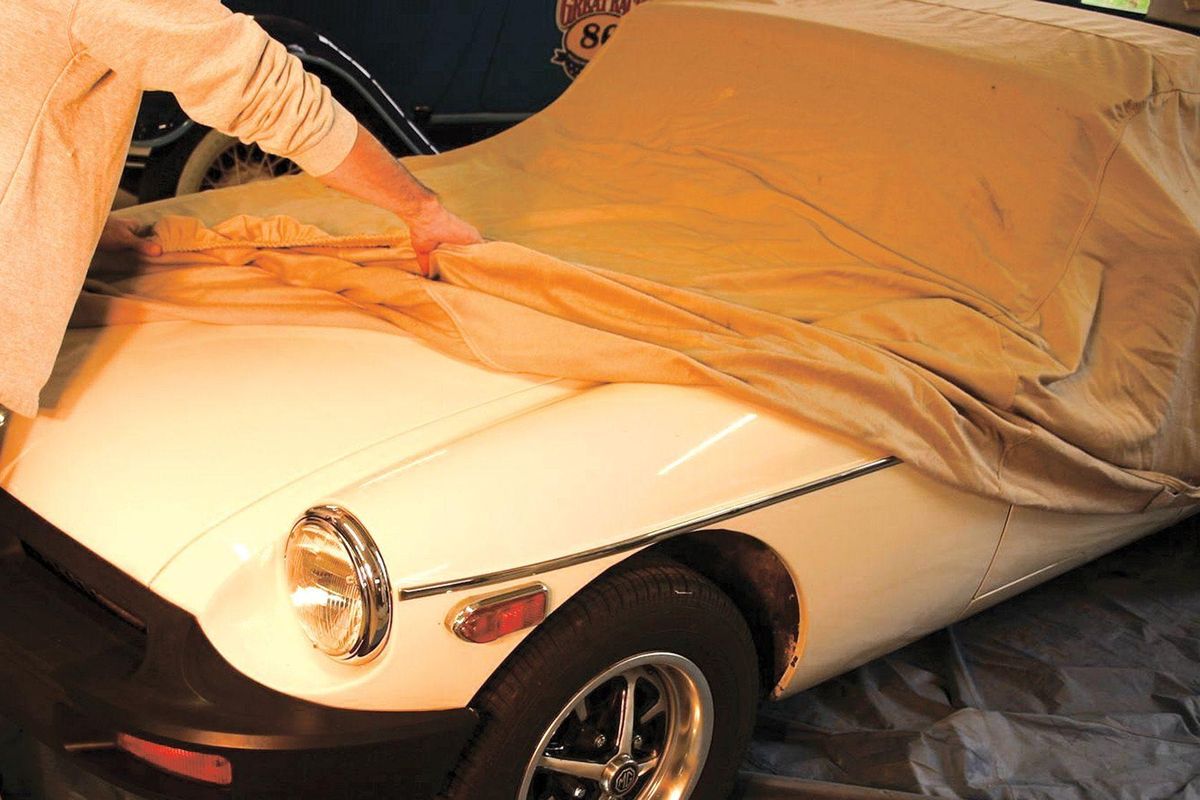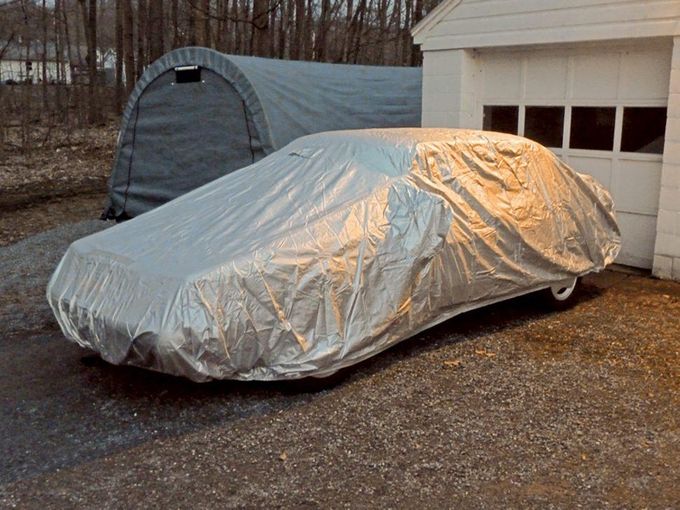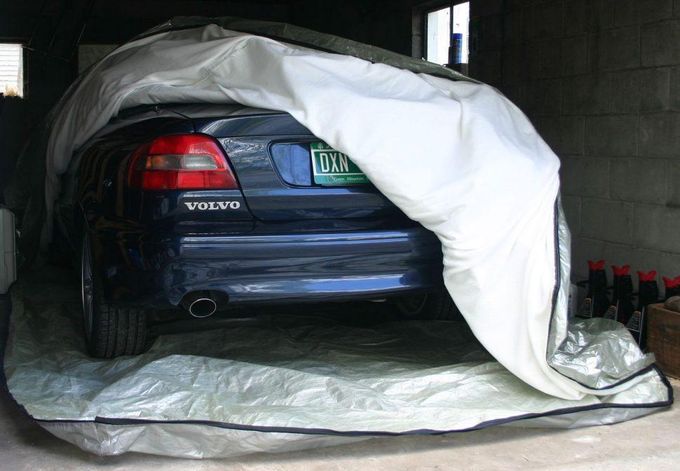Considering a car cover? Here are some points to ponder
Considering a car cover? Here are some points to ponder
Considering a car cover? Here are some points to ponder
03/16/2021

Original Article by Mark J. McCourt @ https://www.hemmings.com/stories/2021/03/16/considering-a-car-cover-here-are-some-points-to-ponder
In This Article
Anyone who takes pride in their automobile feels the urge to keep it in the best condition possible, mechanically and cosmetically, so it will continue to perform and look its best. And one of the simplest ways to maintain the appearance of a car or truck is to cover it when it’s not being used. A purpose-built cover will protect vehicles from sun damage, from inclement weather, from dust, and from accidental harm caused by nature, animals, or people. It could also discourage or prevent vandalism or theft! Regardless of whether you park your vehicle outside or indoors, properly covering it will extend the life of its finishes, both exterior and interior. Let’s talk about what this entails.

Non-custom fit covers provide an economical alternative for outdoor and indoor vehicle protection, but there are tradeoffs to contemplate.
1. What Not To Wear
“Do I need to buy a special cover? What’s wrong with using old blankets or bedsheets?”
Old, soft cloth bedding materials are the simplest coverings for vehicles, but they’re far from ideal. Your old comforter will protect the upper surfaces of your car or truck in the garage, but it likely isn’t large enough to fully cover the sides, leaving them vulnerable to door dings or scratches from other items stored in the shared space. That loosely draped blanket won’t keep pets or pests from crawling up between the paint and the cloth. And of course, such a covering would not stand a chance outside, blowing away at the first good breeze, and soaking up the rain and holding it on the finish. This isn’t a good option if you really care about protecting your paint.
A serious no-no for outdoor storage is using one of those blue tarps you can pick up at the hardware store. They may be water-resistant, but a tarp’s woven polyethylene material is rough enough to badly abrade the finish, and when moisture gets underneath, it’s essentially trapped, with condensation on your vehicle’s surface potentially leading to mold or rust.

Storage bag-type covers enclose the entire vehicle and are secured with a zipper, which aids in discouraging pests; these covers may be unlined, or come with a soft lining, as seen here.
2. Spoiled For Choice
“What options do I have when it comes to different types of car covers?”
These days, we’re spoiled for choice when it comes to the variety of safe and effective covers that are readily available, but making the best choice depends on a number of important factors. The traditional type of cover is made of fabric and it fits over the vehicle, typically covering as far down as the rocker panels and shielding most of the wheels; it’s secured around or underneath the bottom by elastic or straps. A more encompassing type of cover is the storage bag style, which sometimes offers proprietary corrosion-resisting properties and may or may not be lined with soft inner material; a vehicle is parked on the base, the top portion is laid over, and the entire unit is sealed with a zipper. And the newest styles of cover don’t touch the car’s surfaces at all: the vehicle is parked within a full or partial enclosure that is held up by forced air (sealed, like a bubble) or spring tension and rope (open on the bottom, similar to a tent).
When it comes to traditional-type covers, there’s a basic choice between universal-fit and custom-fit. The former is usually a bit oversized to cover a range of cars or trucks that are around the same size and shape as yours, while the latter fits your vehicle’s curves snugly, having been made from an exact, measured pattern. Both fits are available in numerous textiles (cotton, microfiber, polyester, nylon, and layered woven materials are the most common choices), and some feature soft inner linings designed to ease contact with the body surfaces. The best choice comes down to the location and possible hazards of your vehicle’s storage area.
3. Behind Closed Doors
“I keep my car inside, so what should I look for when it comes to specific traits?”
You’re fortunate to have storage for your vehicle that keeps it out of the weather, so its paint finish already has a big advantage! With indoor storage, your focuses will most likely be keeping dust and moisture from settling on the paint, and protecting the body panels from potential damage caused by opening car doors, falling items, and the like.
The traditional covers designed specifically for indoor use tend to be lighter in weight and thickness than those intended for outdoor use, and therefore aren’t appropriate outside in inclement weather. The storage bag and no-contact covers tend to be more expensive and take up more physical space around the vehicle, but offer a physical barrier for additional safety.

Bubble covers enclose the vehicle, and an electrically operated fan circulate air continuously to keep dust and moisture from settling on the finishes.
4. In Its Element
“I keep my car outside, so what should I look for when it comes to specific traits?”
The impressive recent developments in car cover design and construction mean that your vehicle’s finish can be almost as well-protected outside, under a cover, as it would be within four walls. But before you choose what to use, you’ll want to carefully consider these factors: What is the climate in your area through every season? And sitting outdoors, will your car or truck potentially be exposed to a lot of sun (leading to ultraviolet light degradation of paint, plastics, and rubber)? To a lot of rain, or even worse, acid rain? To hail? Bird droppings? To tree leaves, pine needles, acorns, falling twigs or branches, or tree sap? Is it windy? Is dust or dirt easily kicked up?
Even if you live in a desert region, moisture control is a primary consideration when choosing the type of cover that works for you. You’ll want to ensure that, even if the cover offers claims of being waterproof or water-resistant, it still allows moisture that has gotten under the surface to evaporate away. Breathability is key to avoiding mildew and corrosion. If wind is a regular weather factor, you might consider opting for a custom-fit cover, because a universal-fit example may move around with the breeze, potentially scratching your paint. Certain traditional covers promise good resistance to UV light, and thicker examples can offer a measure of impact protection.
While some are intended for indoor use only, certain storage bag-type covers are suitable year-round outdoor use. And specialist car cover manufacturers sell ranges of inflatable no-contact shelters, with electric fans promoting constant airflow, that are intended for outdoor use.

5. For The Long Haul
“How should I clean a cover? How long do they last?”
The type of maintenance a car cover requires varies according to the material from which it’s made. When they’re soiled or excessively dusty, some traditional-type covers can be laundered in a household or commercial washing machine on the delicate/gentle setting, using a small amount of mild detergent. To ensure that detergent is fully removed, it’s smart to run an extra rinse cycle. Air-drying is the safest option, although some covers can be tumble-dried on low heat. If it’s not recommended to machine wash a cover, you may be able to hand wash it as it’s still on the car, before giving it a good rinse and allowing it to dry on a clothesline, or on the vehicle itself.
Many covers sold by reputable firms come with warranties that cover defects and wear. Covers subjected to outdoor use will likely lose their effectiveness more quickly than those used inside, so you’ll want to see if the traditional outdoor cover you’re considering has a stated warranty.
